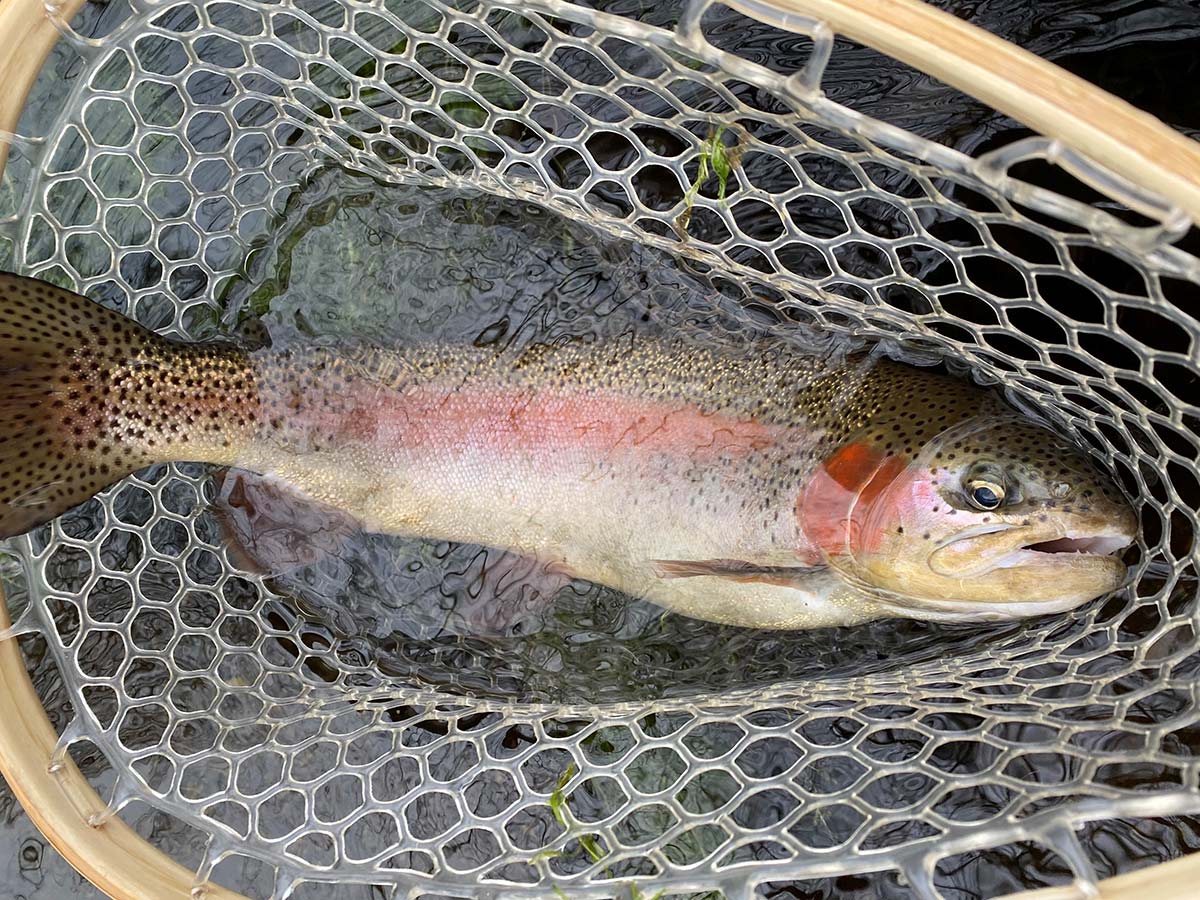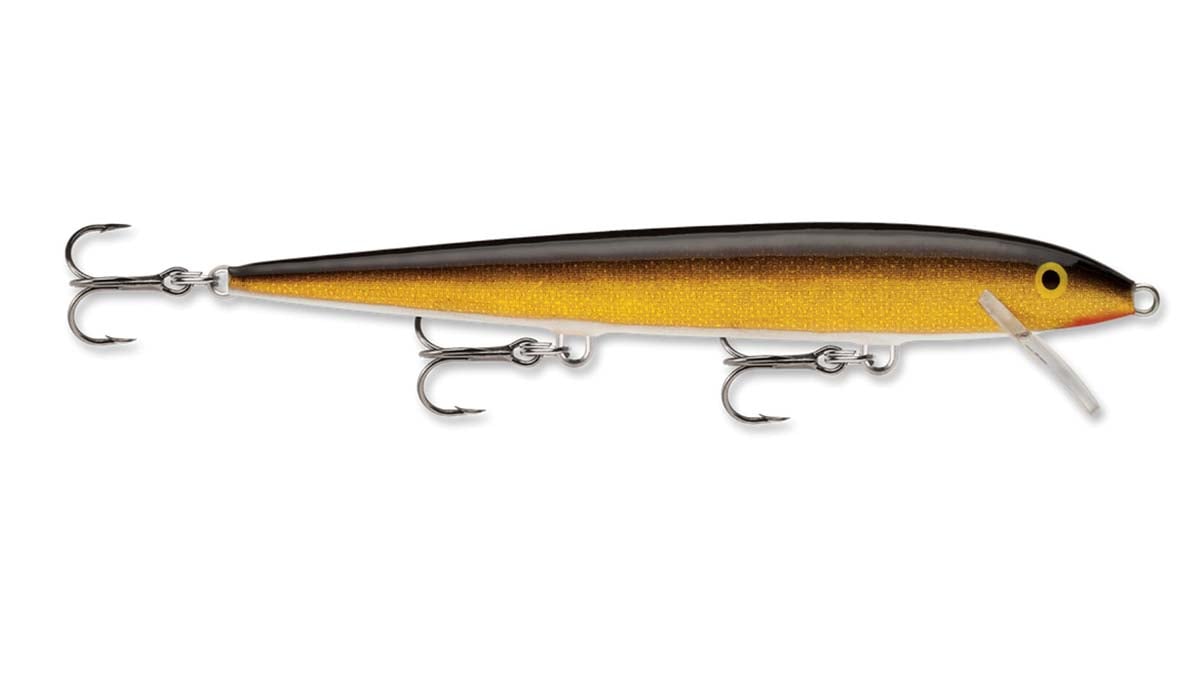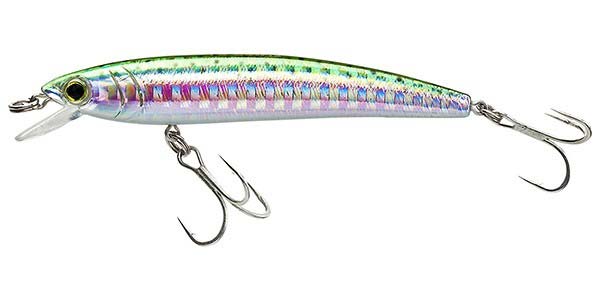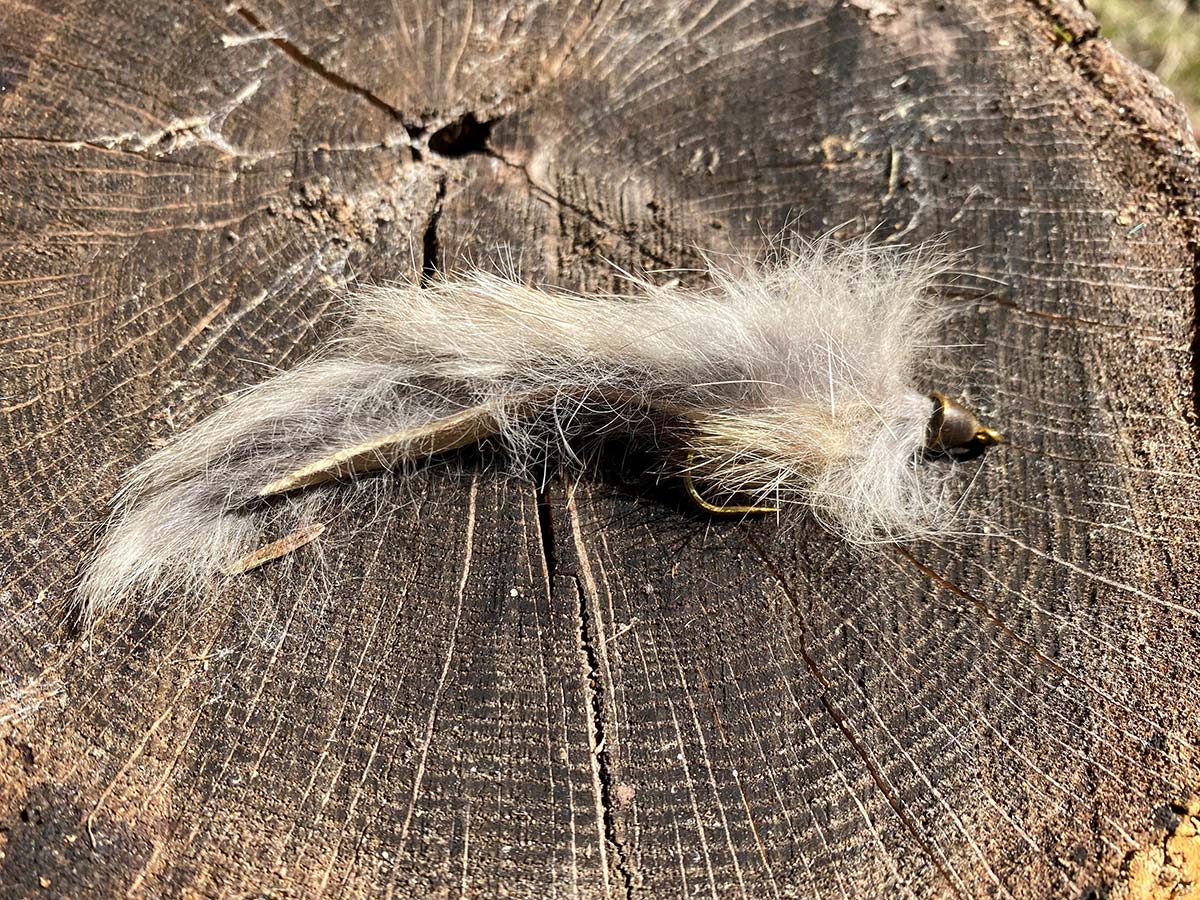
Three lures that will catch you big trout this fall and winter.
Want to catch big trout? I mean really big trout? And lots of them too?
I’ve discovered three lures that if used with each with a specific presentation for each, will help you achieve this.
Stickbait
The first is a stick bait, or what we called “slim minnow” plugs in the 60s and 70s. When I first started fishing them it was unheard of using them for trout. They were known bass, pike, and walleye lures. The artificials most trout fishermen used at the time were small spinners and spoons. Since then, though, these long, slim plugs have become standard trout lures. But it’s not just the plug that makes the real difference here. It’s the plug in combination with the specific presentation that lifts this iconic lure to the ultra-deadly level.
For some reason, and I simply don’t remember why, I started trying floating Rapalas in trout streams. Maybe it was because they worked so well for me in lakes for largemouths, as well as in salt for stripers too, so why not? One time when I wasn’t catching fish, I tied one on I’d brought along and just nonchalantly casted it across the stream and started jerking that rod tip hard and sharp nonstop as I reeled the slim lure in on a tight line. The plug started jerking, darting, and sliding in sudden, random directions as it came, and lo and behold, trout just came out of nowhere, wildly chasing that thing trying to eat it. I couldn’t believe it. Some chased it from the other side of the stream all the way to my feet, apparently paying no attention to me, while slashing and biting at the lure the entire way. Some just grabbed it solidly at the beginning of the retrieve and were hooked. My mouth gaped. I was astounded! I repeated this retrieve with the same lure the next trip and the same thing happened. The presentation hasn’t lost its effectiveness since.

I’m partial to certain plugs and I generally like bigger ones than the standard “small” trout sizes. They catch just about as many small trout as the smaller ones do and simply draw the bigger fish better. I choose plugs that will dart well and long (and often do this side to side on successive jerks) and do so at the “right” speed of the dart (a quick accelerated motion) that triggers a fish’s instinctual strike. They can be stickbaits that float at rest or suspend. I’ve tried a lot of plugs and the ones I like are the Yozuri 3-1/2 inch-floating Pins Minnow (my favorite), Gags Grabbers 5 inch Mambo Minnow (floating), the Original floating Rapala in 4-3/8 and 5-1/4 inches, and the 5-1/2-inch Rapala Husky Jerk (it suspends). You can go out and find your own favorites too. Choose the colors you fancy and that work for you. Action here is way more important than finish.
| TYING THE RABBIT STRIP JIGGY |
| For those who tie, measure out “Zonker strip” rabbit strip to a little more than 2-1/2 or 3-3/4 inches and cut it. Put (thread) your bead or two cones (slid together back to back to form an “egg” shape) up to right behind the eye of a #6 short shank nymph hook for the 2-1/2-inch fly, or on a #4 medium shank nymph hook for the 3-3/4-inch pattern. Wrap (tie) the weight in just behind and snuggled up to the hook eye. Straighten out the rabbit strip and pierce hook point on hairless hide side of the rabbit so rabbit hairs will ride “up” on the side of the hook bend, point and barb. Then tie the rabbit in right behind the tungsten head. Make sure that strip ends up straight from head to tail. That’s your lure! Colors I like are white, florescent pink, brown, olive, and purple. |
To fish these lures work in any direction you cast them—downstream, upstream, up and across, down and across, directly across stream. I get my biggest fish bringing the lure back directly across stream, up and across, and from casting it directly upstream. Make your cast, get tight to the lure, get it under, and then start jerking that rod tip sharply. That lure will respond by darting and sliding to the side. As soon as it stops jerk it again and it should dart the other way. Repeat this for the entire retrieve. You have to keep reeling just fast enough so that you keep tight to the lure (with some good, but not too much, resistance) for the entire duration. Practice will get you there. In current that lure will dart, flutter, and slide seductively, especially when it moves across different speed currents, and current seams. Hold on friends. Those strikes will be vicious. But contrary to that, some you won’t feel at all. In this occasional instance the lure will just disappear. Set the hook!
Fish this lure in all types of water, shallow or deep, fast or slow. The darting, strike triggering lure will even bring hungry and enraged trout “up” to it from the depths in deeper water such as in deep pools and “plunge” pools. Many lures won’t. Fishing this lure can provide you with exciting visual fishing as you often see the lure moving and flashing, the fish following, at times striking repeatedly, and you’ll certainly witness the exciting and aggressive takes much of the time. It’s what fishing’s about friends.

Slug-Go
Lure number two is the Slug-Go, the famous soft plastic bait. I like the 4-1/2, 6, and especially, the 4-inch sizes. I like the white, dark olive, and silver/dark top colors—try hot pink too. I especially like white because it’s a color you can see at depth (the lure you can see is the lure you can manipulate), you know where it is (hopefully near bottom) and you can more easily tell when it’s been eaten—it disappears, you see the fish grab it, or it suddenly jerks way to the side.
You want to fish the Slug-Go in combination with the Darter Head weighted head to really make this lure effective. The Darter Head looks like a sideways elongated cone that tapers to a point at the front. I like Gamakatsu and Owner brands in 1/16 ounces and especially the 1/8-ounce Darter Head with the 4-inch Slug-Go, the 1/8 to 3/8 ounce sizes with the 4-1/2-incher, and 1/4 to 3/8 ounces with the 6 inch. For even bigger fish you may want to try the 7-1/2 inch size. The Darter Head helps that Slug-Go dart and slide significantly to the side at a darting speed that triggers the strike, and the weight helps keep the lure near the bottom where many trout, and especially big trout lurk.

You retrieve the darter-weighted Slug-Go by first letting it go to the bottom, and then on a tight line, giving it sudden sharp and controlled repeated rod tip jerks as you reel for the entire retrieve. Pause between jerks to just let the lure dart as far as it can and no more, and then “jerk” it again so it slides the other way. You’ll have to reel just fast enough to keep a tight line throughout. There’s an optimal retrieve speed for each lure size and weight head to get the best action. You may have to pause during the retrieve (perhaps even more than once) to let the lure drop back to the bottom too. Ideally you want to retrieve that lure just above bottom. Watch your lure if you can to see how the darts and action correspond to your sharp rod tip movements and pauses. Coordinate everything to get the best strike triggering action. Like the stickbait, this lure is productive in all river and stream water types, in any current direction and is especially good in slower, deeper water.
Rabbit Strip Jiggy
Lure number three is actually a fly that can be used as a lure. I started using it as a fly on a fly rod (still do) and later on started fishing it at times with a spinning rod—it was so deadly. I’m such a big fan of this fly as it’s just an incredible artificial for many fish species and especially so for trout. Its construction is shockingly simple too. It’s called the Rabbit Strip Jiggy—a fly created by the famous fly tyer, Bob Popovics. Essentially, and literally, it’s just a short, straight piece of narrow rabbit strip impaled and then tied on a hook with some tungsten weight at the head.
You can’t buy it at a tackle store and even if you’re not a fly fisherman and never will be, it’s worth learning to tie flies just so you can tie this fly. And as far as fly tying goes, this fly is a cinch too, as it’s an incredibly easy and fast fly to tie. If you don’t already tie flies, and don’t want to, ask a friend who does, and maybe they’ll tie some for you. You can also approach a “professional” fly tyer.

After a lot of trial and error in trying different lengths, I determined that a 2-1/2 inch and a 3-3/4- inch fly offered the most action. Most action equals best strike triggering response, equals most strikes. Sound familiar? The tungsten “weights” come from a fly shop—a 3/16-inch tungsten bead, or a couple of medium size or large size tungsten cones. The former two are good for both length flies, the latter (two large size) for the 3-3/4 inch only.
| PROPER TACKLE |
| For the slim minnow plugs (stickbaits) anything from ultra-light to medium power rods can work well in lengths 5-1/2 to 7-1/2 feet. The 4-inch Slug-Go requires a rod no heavier than a medium/light but you can use a medium or even medium/heavy power rod with the larger two. The Rabbit Strip Jiggy requires no heavier power rod than a medium/light. You might be able to get away with a medium. For the smallest, lightest (one bead) one it’s an ultra-light. Reel size corresponds to the rod. Ultra-light reels for the ultra-light rod. Use 2000, 3000, or even 4000-size reels for the longer rods. You can use 8, 10, or 15 pound-braid. It’s all so thin, and your leader (mono or flouro) can be 6 or 8 pounds for the small Jiggys and Slug-Go, to 8 – 12 pounds or even 15 pounds for the stickbaits and bigger Slug-Gos. You’ll get better and more immediate response with these lures using stretch-free braid. |
Cast them out, let them go to the bottom, and then on a tight line, give the lure very short, repeated, sharp rod tip jigs for the entire retrieve. Pause just a short instance after each short jig to let the weighted head drop from pointing directly up vertically to pointing directly toward the bottom (180 degrees difference). This repeated nonstop movement gives wild up and down action to the Jiggy that is strike triggering and almost irresistible to trout. The more action you can give it per foot of retrieve the better. Try to keep the lure near the bottom for the entire retrieve. On many takes you will only see the lure disappear and feel nothing. When this happens, set the hook, it’s a fish! Fish the Jiggy in any kind of trout water, pools, riffles, runs, frog water, in rivers, streams, or even in lakes. One commercially available fly you can buy which will work similarly, but not quite as well, is the Stump Buster.
Give these lures and their corresponding presentations a try on your next trout outings and see what happens. I think they’ll open up a whole new world of exciting trout fishing for you.




